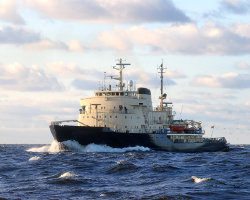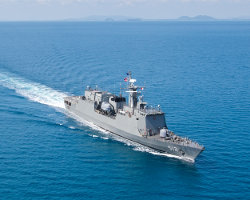Motion Reference Units or MRUs use gyroscopes and accelerometers to measure the roll and pitch (attitude) of an object with reference to the absolute vertical.
In addition to the attitude, MRUs also measure vertical displacement of the object relative to some initial starting point (typically the sea surface). This displacement is known as the heave.
Attitude is calculated by integrating rate gyro measurements. However, as all gyros have an inherent bias, this will cause the attitude outputs to drift over longer time. Also, as rate gyros can only measure attitude rates, they cannot give roll and pitch angles relative to the absolute vertical.
Accelerometers can give an attitude measurement relative to the absolute vertical, and they do not experience drift. However, attitude measurements derived only from accelerometers are disturbed by any movement of the MRU.
By combining the measurements from gyros and accelerometers, one can get the best of two worlds. It is exactly this method an MRU uses to get accurate roll and pitch measurements in a dynamic environment. Fusing of gyro and accelerometer measurements are usually done by a Kalman Filter (KF), which is a method to fuse noisy data from separate data sources in an optimal way.
To calculate heave, MRUs use their knowledge of the roll and pitch of the system together with the triad of accelerometers to determine the acceleration of the sensor in the vertical direction. By integrating the acceleration twice, the position is obtained, which is the heave output. However, as with the rate gyros, the accelerometers also have an inherent bias. This bias will make the heave estimate drift off. To overcome this limitation, high-pass filtering is used in the heave algorithms to filter out the bias prior to integration. High-pass filtering comes at the expense of phase distortion, attenuation, and delay in the heave output, so choosing the right high-pass filter is key to good heave performance. The Horizon-505 and Horizon-HD use auto-adjusting heave filters, which automatically tunes the heave filters to the optimal value, based on the environmental conditions.
As an MRU fuses gyro and accelerometer inputs, it is the ideal sensor when tilt needs to be measured while moving. However, if the object one wants to measure is stationary, a MRU is not the best solution, as the gyros are not only unneccesary, but will decrease the accuracy of the sensor. In this case, a static tilt sensor will give higher accuracy at a much lower price. Vectory Sensor Systems supply the Microrad and Millirad static tilt sensors for these applications.



 Defense
Defense